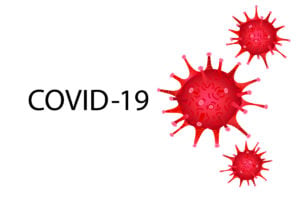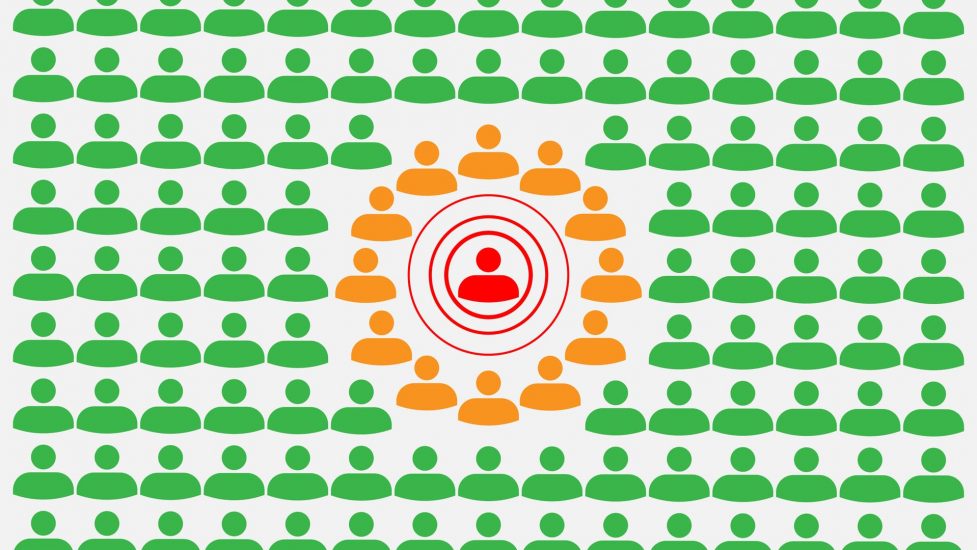
As many of us have witnesses over the past few months, COVID-19 is highly stubborn and contagious. From weddings to spring break to nursing homes, the virus has shown to be resilient and in more than 100,000 cases, devastating.
In response, there has been a surge in new contact tracing-related jobs to combat and control this pandemic. “Contact tracing is the key tool that will allow us to move safely from everyone staying home to slow the spread to a more targeted approach,” says Caitlin Rivers, Ph.D. MPH.
“In order to save lives, reduce COVID-19’s burden on our healthcare system, ease strict social distancing measures, and confidently make progress toward returning to work and school, the United States must implement a robust and comprehensive system to identify all COVID-19 cases and trace all close contacts of each identified case,” according to a report from the Johns Hopkins Center for Health Security.
“It is estimated that each infected person can, on average, infect two to three others. This means that if one person spreads the virus to three others, that first positive case can turn into more than 59,000 cases in 10 rounds of infections,” the report concludes.
How Contact Tracing Works
“Contact tracers need to quickly locate and talk with the patients, assist in arranging for patients to isolate themselves, and work with patients to identify people with whom the patients have been in close contact so the contact tracer can locate them,” according to the description provided by the Centers for Disease Control.
Contact tracing enables the collection of data to inform health experts, policy makers, and government officials of where and how the disease is spreading.
Contact tracing enables the collection of data to inform health experts, policy makers, and government officials of where and how the disease is spreading. And conversely, the information contact tracers collect can show where the pandemic seemingly under control, and what steps that organization or location is taking to stifle the spread and severity.
The Fitzhugh Mullan Institute for Health Workforce Equity (Mullan Institute) created a Contact Tracing Workforce Estimator, which helps state and local health officials determine the number of contact tracing staff needed to address the spread of the coronavirus.
“This new tool will help public health officials plan for the workforce needed to identify those most at risk and ease up on community-wide social distancing measures yet still keep the public safe,” says Edward Salsberg, MPA, senior research scientist for the Mullan Institute.
The Skills You Need for a Contact Tracer Job
To properly address the pandemic, more than 100,000 contact tracer workers are needed across the country, at a cost of $3.6 billion. “That is a small price to pay given the economic devastation this virus has wrought nationally and around the globe,” says Michael Fraser, chief executive officer of the Association of state and Territorial Health Officials (ASTHO).
The basic skills needed for a contact tracer job include the ability to investigate and follow up with contacts, analytical and interviewing skills, according to the World Health Organization which developed criteria during the Ebola outbreak in 2015. Every state and organization has different education and experience requirements. Some may only require a high school diploma, but others may require bachelor’s degree, others still, a medical degree.
Contact tracers should have soft skills such as empathy and the ability to build trust and foster good community relations. An awareness of local cultural sensitivities can contribute significantly to this work. The types of jobs under the contact tracing umbrella include lead epidemiologists, field epidemiologists, data managers, investigation teams, supervisors, and contact follow-up teams.
The jobs can be done from home, since a lot of the work is done by phone. Depending on the program, the work can be part- or full-time and pay ranges from $17 to $25 an hour.
Who’s Hiring?: A Link to State Health Departments
Free Online Training Courses
ASTHO and the National Coalition of STD Directors (NCSD) launched a free online training course, “Making Contact: A Training for COVID-19 Contact Tracers.” The course takes about three hours to complete and is designed to prepare job seekers who have little or no public health background to work as entry level contact tracers.
“This program is preparing thousands of new contact tracers to go out into their communities to fight the spread of COVID-19 and break the chain of infection,” says David C. Harvey, executive director of NCSD. “Contact tracing has been used for decades to combat infectious disease outbreaks in the U.S. and around the world. No matter your professional background, you can be trained to do this work.”
The training provides lessons on infectious disease control, especially for COVID-19, and the four steps of contact tracing: notify, interview, locate contacts and monitor.
The training provides lessons on infectious disease control, especially for COVID-19, and the four steps of contact tracing: notify, interview, locate contacts and monitor. Upon course completion, a certificate is awarded. State- and local-specific instructions supplement the learning to meet the needs of individual jurisdictions. As of mid-May, more than 18,000 people registered for the course.
“We are thrilled by the overwhelming response from so many individuals across the country who want to be part of the COVID-19 contact tracing efforts happening in their communities,” says ASTHO’s Fraser. “Contact tracing is critical to our nation’s COVID-19 response, and we know that this course will continue to supplement the efforts underway in cities and states to quickly on-board new contact tracers and help meaningfully bend the curve of COVID-19 infection.”
Transitioning to a New Job, Even If Temporarily
More than 296,000 people have already enrolled in the course. Former journalist-turned-entrepreneur Dianne Averill is taking the free COVID-19 Contract Tracing course offered by Johns Hopkins University through Coursera, recommended by a potential employer. Averill, who has owned her own graphics design company for 30 years, applied for a contact tracing supervisor role in her home county of Dutchess County, New York. Having worked as a newspaper editor, she says her skills are transferable.
“The editor skills of having a staff—I previously had 15 people—and you’re juggling all of those people,” Averill says. “The supervisory position I’m trying to get supervises 20 contact tracers and a community health person. Being able to keep track of everything that all of those people are doing to be able to support them, be the liaison between the health department and actual contact tracers…it’s like all the things you do with a reporter. ‘Have you tried asking this? Have you done that” Have you talked to this person?’ General editorial editor skills.”
After she passed the resume and application screening and an initial phone interview, she was directed to the Johns Hopkins course. She anticipates it’ll take her six hours to complete, then she’ll take a test to earn a certificate. Once she earns the certification, she says she was told it could take up to 14 days for her to receive instructions for another two hour training session, she says, to learn the “ins and outs of what they actually expect me to do and use the online system they’re using to track” people.
“I would be coordinating the scheduling and providing support to actual contact tracers, and so I think the years I also spent as a reporter would be helpful, because I do know what it’s like to have to say uncomfortable things to people who don’t know me,” Averill says. “The bottom line is not to scare someone you have to call. You have to be level-headed and know when to stop and say, ‘I’m not a doctor.’”
In addition to journalists, ASTHO suggests the high level of unemployment has resulted in a “willing, motivated and available workforce that can fill these roles in all of our communities.”
The most successful structure includes a collaboration with government agencies, higher education institutions and community organizations for recruiting, training and response. Fraser also emphasizes urgently needed federal funding can ramp up the training, hiring and deployment of these new professionals.
“We will only be able to recover when we have the capacity to quickly isolate new cases and track those that have been near infected individuals,” he says.











